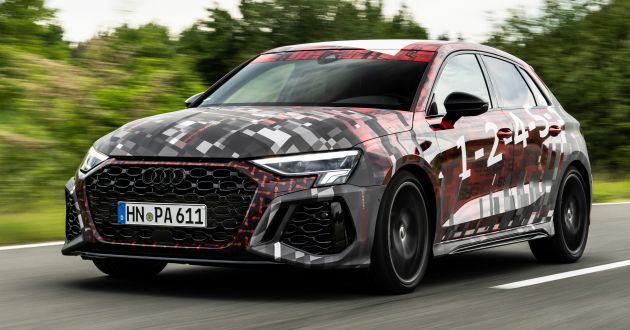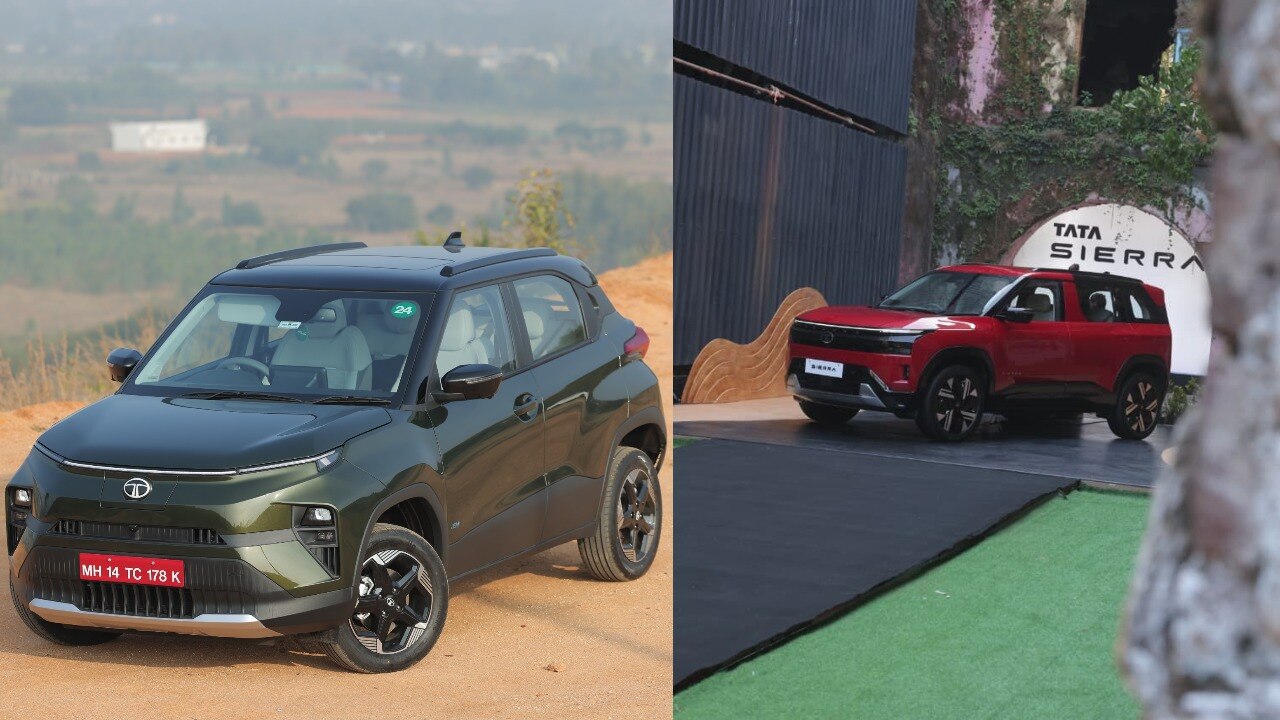2022 Audi RS3 teased – 2.5L inline-five with 400 PS, 500 Nm; 0-100 km/h in 3.8 seconds, RS Torque Splitter!
Audi will be unveiling the fourth-generation RS3 soon, following a series of teasers and over the last few months. We already know that the RS3 will be available as a hatch and sedan, but today, the automaker revealed intriguing new details of the pair, and it’s clear Audi is going after Mercedes-AMG.
First things first – the 2.5 litre inline-five engine continues to power the RS3, making 400 PS from 5,600 to 7,000 rpm and 500 Nm of torque from 2,250 to 5,600 rpm. That is 20 Nm more than the outgoing RS3, thus allowing the hatch to sprint from 0-100 km/h in 3.8 seconds. That’s 0.3 seconds quicker than the older RS3, and one-tenth of a second quicker than the venerable Mercedes-AMG A 45 S 4Matic+.
Audi says those output figures make it the most powerful hot hatch in the segment, but remember, the A 45 S’ M139 2.0 litre four-pot makes 421 PS and 500 Nm. Top speed for the new RS3 is electronically limited to 250 km/h, but this can be optionally raised to 280 km/h, or 290 km/h with the RS Dynamic package with ceramic brakes. A seven-speed dual-clutch transmission is standard, and a Launch Control function is available this time around.


There are seven drive modes to choose from – comfort, auto, dynamic, efficiency, RS Individual, RS Performance, and RS Torque Rear. That’s right. The new RS3 can drift, thanks to a newly developed fully variable torque vectoring called RS Torque Splitter. It is the first Audi model to get this system, which uses one electronically controlled multiple disc clutch on each of the respective drive shaft.
During dynamic driving, the torque splitter increases the drive torque to the outer rear wheel with the higher wheel load. This significantly reduces the tendency to understeer, Audi says. In left-hand curves, the torque splitter transmits torque to the right rear wheel, and in right-hand curves it sends them to the left rear wheel.
When driving on closed roads, the torque splitter enables controlled drifts by applying all of the engine power to just one of the rear wheels. That’s up to a maximum of 1,750 Nm of torque, mind you. Besides the newfound ability to drift, RS Torque Rear also improves agility and stability during dynamic driving. It is less prone to understeers, and the system can compensate for oversteer, too.


The amount of power that gets transmitted to the rear wheels vary depending on the selected drive mode. In comfort or eco modes, the RS3 runs almost solely through the front wheels. In auto mode, torque distribution is balanced between the two axles, and in dynamic mode the car becomes heavily rear-biased.
For suspension, the RS3 gets newly developed dampers and valve system that is more reactive than before. It’s 10 mm lower than the S3, or 25 mm lower than the A3. Installed up front is a McPherson strut suspension with model-specific pivot bearings, stiffer lower wishbones, subframes, and stabilisers. It also has one degree of additional negative camber compared to the A3. The rear axle features a four-link design.
Of course, the RS sport suspension plus with adaptive damper control is available as an option, too. There’s also RS-specific progressive steering equipped as standard. Now, between this and the Mercedes-AMG A 45 S 4Matic+, which would you pick?
The post 2022 Audi RS3 teased – 2.5L inline-five with 400 PS, 500 Nm; 0-100 km/h in 3.8 seconds, RS Torque Splitter! appeared first on Paul Tan's Automotive News.
from Paul Tan's Automotive News
Read The Rest:paultan...













































































































Post a Comment